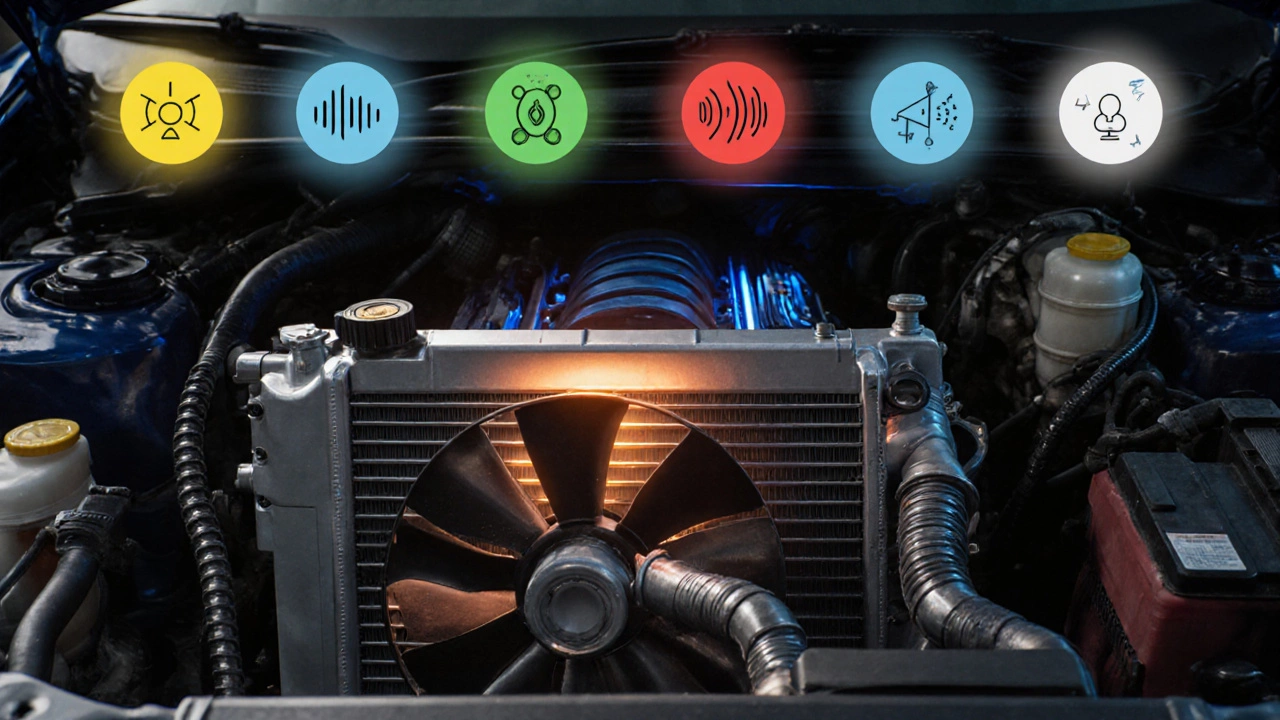Radiator Whining: What It Means and How to Fix It
When you hear radiator whining, a high‑pitched squeal coming from the engine bay that usually signals a problem in the cooling circuit, it’s easy to ignore it—until the engine starts overheating. Also known as radiator squeal, the noise often points to the coolant system, the network of hoses, radiator, water pump and thermostat that moves heat‑absorbing fluid through the engine or the radiator fan, the electric or clutch‑driven blade that draws air through the radiator core. Both play a crucial role in keeping engine temperature in the safe zone, so a squeal often means something’s not moving fluid or air the way it should.
Why the Whine Happens and What to Check First
Radiator whining encompasses three main triggers: restricted coolant flow, fan belt wear, and thermostat malfunction. If the water pump’s impeller is fouled with debris, the coolant can’t circulate fast enough, and the fan has to work harder, producing a whine that rises with engine speed. A slipping or cracked fan belt does the same thing—less drive to the fan, more strain, louder noise. The thermostat, which opens at a set temperature (usually around 195°F/90°C), can stick closed, holding heat in the block and forcing the fan to spin at full speed, creating that unmistakable squeal. In each case the relationship is clear: coolant flow issue → fan works harder → radiator whining increases. The fan’s condition, belt tension, and thermostat position are the first three things you should inspect when the sound appears.
Beyond these core components, secondary factors can amplify the whine. Low coolant level lowers system pressure, allowing air bubbles to form; those bubbles act like tiny pistons, rattling against the radiator tubes and adding a metallic edge to the sound. A partially clogged radiator core—often from rust or old coolant deposits—restricts airflow, forcing the fan to spin faster and louder. Even the ambient temperature matters: on hot summer days the fan may run continuously, making a marginal issue sound dramatic, whereas in cooler weather the same problem might stay quiet until the engine heats up. By tracking when the whine starts (cold start vs. warm‑up) and whether it changes with engine load, you can pinpoint whether the root cause lies in the coolant level, the fan, or the thermostat.
Fixing the problem usually follows a logical sequence. First, check the coolant reservoir and top off if it’s low; then inspect the radiator hoses for leaks or kinks that could choke flow. Next, examine the fan belt for cracks, glazing, or improper tension—replace it if any damage shows. If the belt looks fine, listen to the fan itself: a loose bearing or worn blades can emit a high‑pitched whine that mimics coolant issues. Finally, test the thermostat by feeling the upper radiator hose after the engine reaches operating temperature; if it stays cold, the thermostat is likely stuck and should be swapped out. Each step addresses a specific attribute of the cooling system, turning the vague whine into a concrete diagnosis.
Understanding these connections turns a scary sound into a manageable checklist. Below you’ll find articles that dive deeper into each of the pieces mentioned—how to bleed air from the coolant system, signs of a failing water pump, when to replace a thermostat, and why fan belt health matters for overall vehicle reliability. Armed with that knowledge, you can spot the exact cause of radiator whining before it leads to overheating, loss of power, or expensive engine repairs. Let’s explore the full range of tips and step‑by‑step guides that will help you silence that whine and keep your engine running cool.

Common Bad Radiator Sounds & How to Identify Them
Oct 22 2025 / RadiatorsLearn the typical sounds of a failing car radiator, what each noise means, how to diagnose the problem, and when to call a mechanic.
VIEW MORE